Hey, have you ever thought about using plants to fight off garden pests naturally? Companion planting is a smart trick, pairing specific crops to protect each other without chemicals. For instance, plant marigolds near tomatoes—they deter aphids with their scent, especially if spaced about 12 inches apart. Stick with me to uncover more plant pairings that can transform your garden into a pest-free zone.
Contents
Marigolds Deter Pests
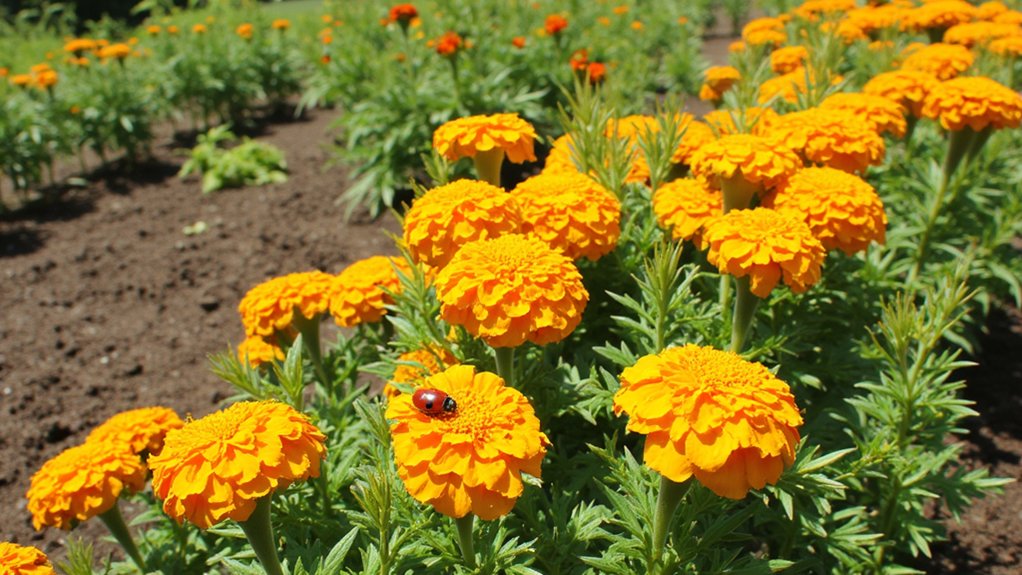
While you might think of marigolds as just pretty flowers, they’re actually powerful allies in your garden’s pest control. You’ve gotta plant them strategically to keep nasty critters away. Their strong scent repels aphids, nematodes, and even rabbits, protecting your veggies.
Start by placing marigolds around your garden borders, spacing them about 8-12 inches apart. This creates a natural barrier, so pests think twice before invading. Make sure you plant them in early spring, after the last frost, for best results.
Here’s the trick: intersperse them among crops like tomatoes or beans, roughly every 3 feet. They’ll work hard, releasing chemicals from their roots to deter underground pests. Check weekly for damaged blooms, and replace them if needed, keeping your garden safe.
Basil Repels Mosquitoes
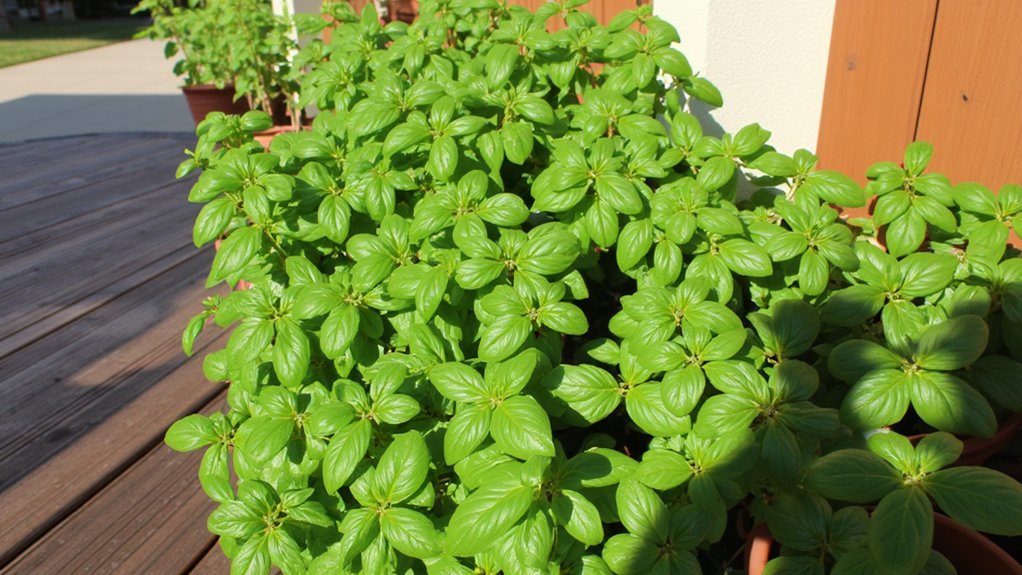
If you’re itching to keep mosquitoes at bay, basil’s your go-to plant for a natural fix. You’ve probably got some in your kitchen already, so why not use it outdoors? This herb’s strong aroma messes with mosquitoes’ senses, driving them away.
Place basil pots, about 12-18 inches apart, near your patio or garden seating areas. Make sure they get 6-8 hours of sunlight daily, and water them when the soil feels dry, roughly every 3-4 days. Snip leaves regularly to encourage growth, but don’t overdo it—leave at least half the plant intact.
You can also rub crushed basil leaves on your skin for a quick repellent. It’s a simple trick, and you’ll notice fewer bites fast.
Garlic Repels Aphids
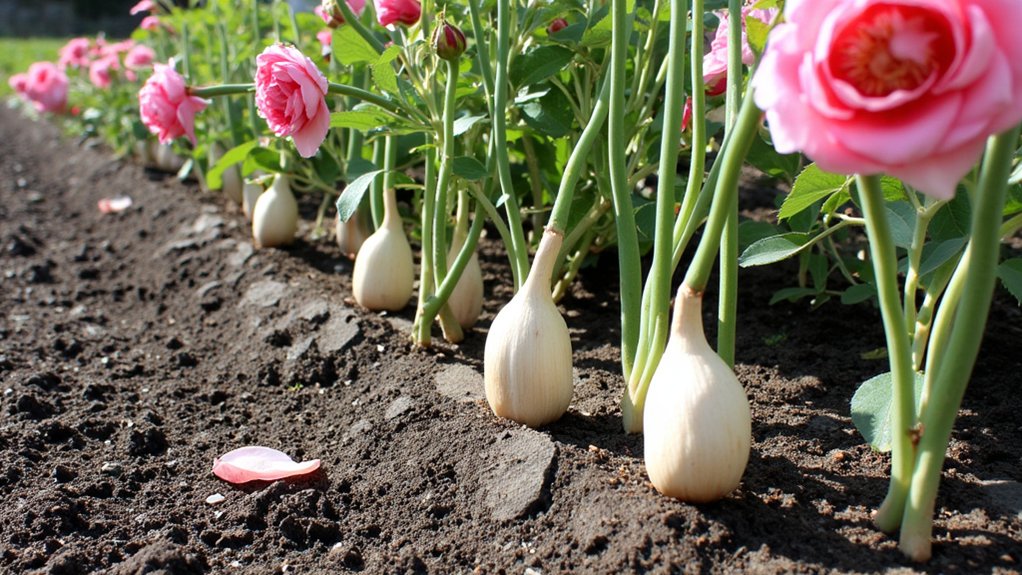
As you tackle garden pests, turn to garlic for a powerful, natural way to fend off aphids. These tiny bugs can wreak havoc, sucking sap from your plants. Garlic’s strong scent, though, messes with their senses, keeping them at bay.
Plant garlic cloves near your roses or veggies, about 6 inches apart, in early spring. Make sure you’ve got well-drained soil, and bury them 2 inches deep, pointy end up. You’ll see results in a few weeks as aphids steer clear.
Don’t expect a quick fix overnight; consistency is key here. Check weekly, and if you spot stragglers, crush a garlic clove, mix with water, and spray lightly. It’s a simple trick, and you’re outsmarting pests without harsh chemicals.
Nasturtiums Repel Beetles
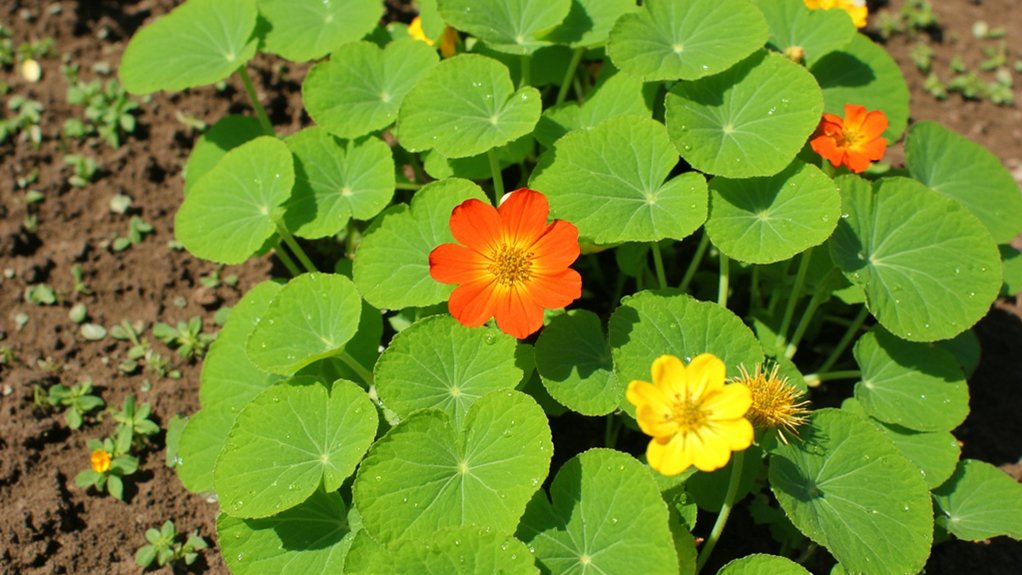
Hey, let’s talk about nasturtiums, a fantastic flower that doubles as a beetle repellent in your garden. These vibrant blooms aren’t just pretty; they’re a secret weapon against pesky beetles. Plant them near your veggies, and you’ll see fewer bugs munching away.
Here’s how to do it: sow nasturtium seeds directly in well-drained soil, about 12 inches apart, after the last frost. They’ll sprout in 7-10 days if you keep the soil moist. Place them around crops like beans or cucumbers, which beetles often target.
Why does this work? Nasturtiums release a scent that repels beetles, naturally protecting your plants. So, grab some seeds, get planting, and watch your garden thrive with less beetle trouble!
Mint Deters Ants

Let’s switch gears and talk about mint, a powerhouse herb that keeps ants at bay in your garden. You’ve probably got some growing already, right? Well, harness its strong scent to deter ants naturally.
Plant mint around your garden’s perimeter, spacing plants about 12 inches apart, to create a barrier. Ants hate the intense aroma, especially from spearmint or peppermint varieties, so they’ll steer clear. Just make sure you contain mint in pots or raised beds since it spreads fast—trust me, you don’t want it taking over!
For extra protection, crush a few leaves and sprinkle them near ant trails or entry points. Repeat this every few days, particularly after rain, to maintain the scent. It’s a simple, effective trick!
Lavender Repels Moths
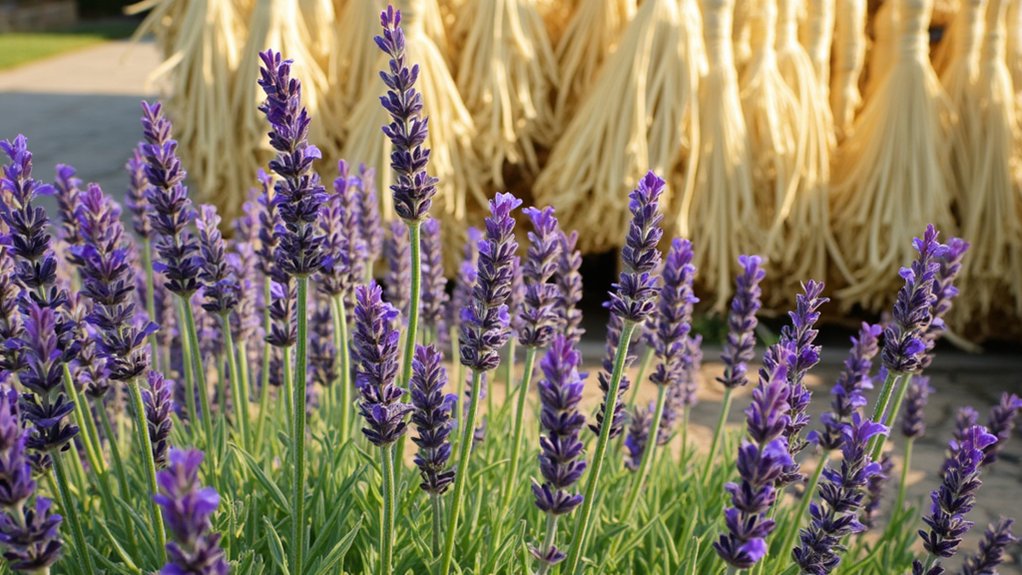
Gardeners, take note of lavender’s power to keep moths out of your space. These pesky critters hate the strong, floral scent, so you’ve got a natural repellent right here. Plant lavender near your garden edges or close to vulnerable plants, and watch moths steer clear.
Here’s how you do it: grab some lavender seedlings, spacing them about 12-18 inches apart in well-drained soil. Make sure they get full sun, at least 6 hours daily, to thrive. Water them sparingly, just once a week, to avoid root rot.
You can also dry the flowers—hang bundles upside down for 2 weeks—and tuck them in closets or drawers. Moths won’t stand a chance with that scent around, trust me on this.
Rosemary Repels Flies
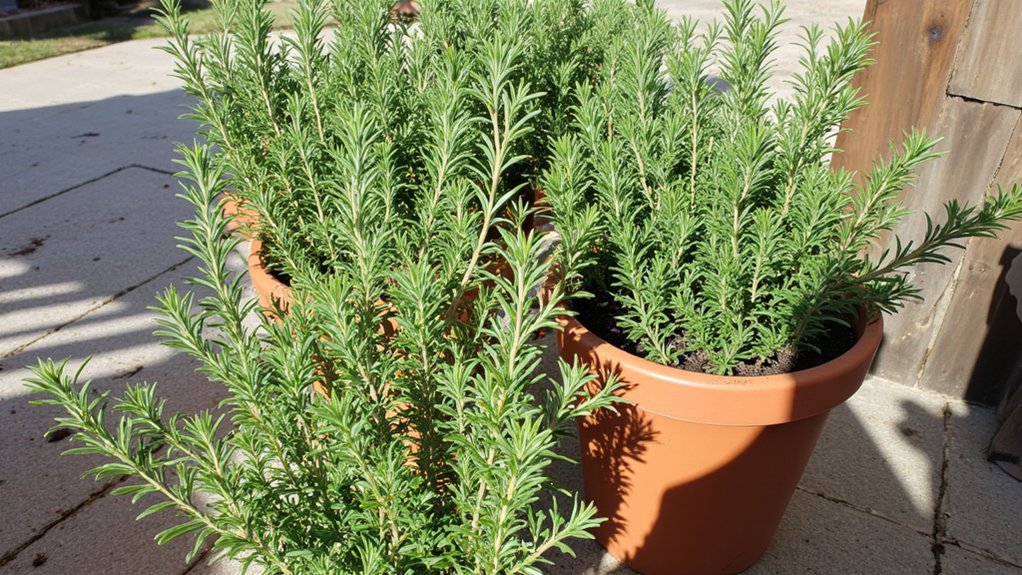
While lavender keeps moths at bay, rosemary steps up as your go-to for repelling flies. You’ve probably noticed flies buzzing around your garden or patio, right? Well, rosemary’s strong, woody scent drives them away naturally. It’s a simple, effective trick!
Plant rosemary near your outdoor seating areas, ideally within 3-5 feet, to create a fly-free zone. Make sure it’s in a sunny spot with well-drained soil, as rosemary thrives there. Water it sparingly, about once a week, depending on rainfall. You’ll see results within a few days as flies steer clear.
Snip a few sprigs, too, and place them on tables during picnics for extra protection. It’s low-effort and works like a charm. Keep this herb handy, and you’re set!
Chives Repel Carrot Flies

As you tackle pest issues in your veggie patch, turn to chives for a clever solution against carrot flies. These pesky insects can ruin your carrot crop, but chives, with their strong onion-like scent, naturally deter them.
Plant chives around your carrot beds, spacing them about 12 inches apart, to create a protective barrier. You’ll want to sow them early, ideally in spring, so they’re established by the time carrot flies emerge, typically in late May.
Keep the chives healthy by watering them weekly, about 1 inch of water, and trimming them regularly to encourage growth. This simple trick helps safeguard your carrots without chemicals. Just watch those flies buzz off, leaving your harvest intact for once!
Thyme Repels Cabbage Worms

Take a look at thyme, a handy herb that’s great for keeping cabbage worms at bay. You’ve probably got some in your kitchen, but it’s also a garden superhero. These pesky worms can shred your cabbage leaves fast, so let’s fight back naturally.
Plant thyme within 12 inches of your cabbage patch, ideally in early spring. Its strong scent confuses cabbage worms, making them steer clear of your crops. Make sure you’ve got well-drained soil, and space plants about 8 inches apart for good growth.
Water thyme sparingly, just 1 inch per week, to keep it thriving. Trim it regularly, too, to encourage bushiness. With this setup, you’re creating a barrier those worms won’t dare cross. Stick with it, and watch your cabbages flourish!
Dill Repels Spider Mites
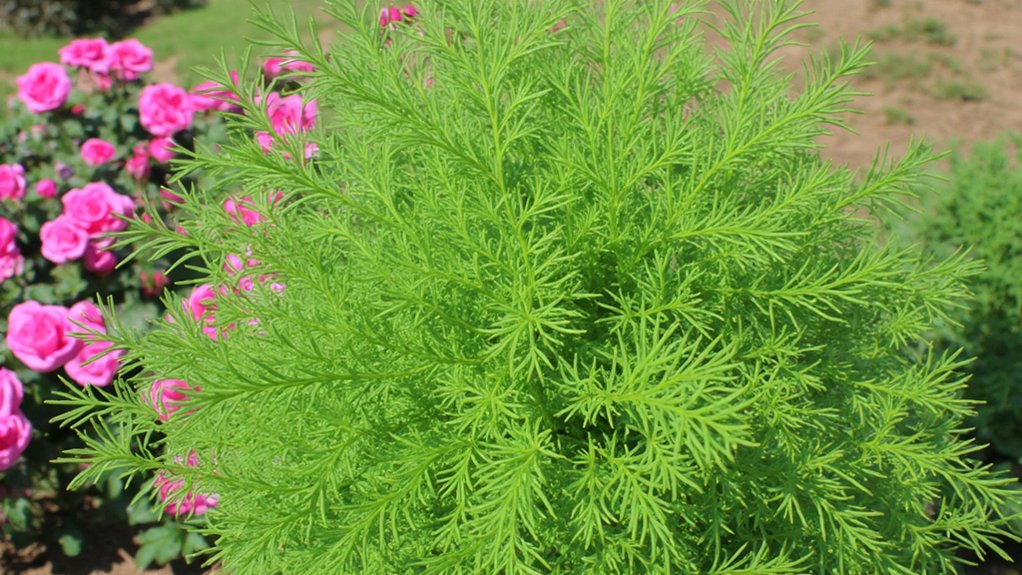
Check out dill, a fantastic herb that’s your secret weapon against spider mites. You’ve probably got these pesky critters on roses or veggies, right? Plant dill nearby, and watch it work its magic with natural repellent properties.
Here’s how to do it: sow dill seeds about 12 inches from vulnerable plants. Make sure it’s in full sun, with well-drained soil, for best growth. It’ll sprout in 10-14 days, starting to deter mites soon after.
Keep the dill healthy by watering it weekly, roughly 1 inch of water. Don’t let it dry out, or its pest-repelling power drops. Trim it regularly, too, to encourage bushy growth. With this setup, you’re giving spider mites a real run for their money!
